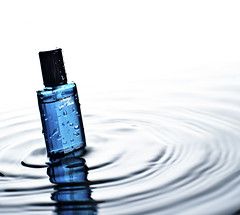Skin care company kept secret on the use of nanoparticals

AN ENVIRONMENTAL lobby group has accused a ''natural'' skincare company of misleading consumers about the use of nanoparticles in its products.
Jurlique, whose range is sold nationally, told Friends of the Earth last year that its products did not contain nano-grade titanium dioxide and zinc oxide.
Georgia Miller, a spokeswoman on nanotechnology for Friends of the Earth, said Jurlique owed consumers an explanation for the inconsistency. ''It underscores the difficulty in getting reliable information [from companies].''
Jurlique's Australasian managing director, Sam McKay, stood by the response provided to Friends of the Earth in November that the sunscreen was nano-free.
Mr McKay said the company would act immediately to improve staff training in the area of product ingredients.
A response from within the company to an anonymous survey, done by consumers on behalf of Friends of the Earth, said its sunscreens ''use fine titanium dioxide as nanoparticles''.
Although there is no clear answer as to the health effects of nanoparticles, however, scientists have warned that the absorption through skin and hair could result in cell damage from free radical production.
The Friends of the Earth survey found 46 per cent of the 140 companies surveyed ''failed to give a straight answer'' on their use of nanoparticles, Ms Miller said.
Four companies, Clarins, MAC Cosmetics, Skinceuticals and Tropicare, had refused to discuss the issue.
Only a few companies, including Dior and The Body Shop, admitted to using nanoparticles.
Nanoparticles appear in many products including cleaning substances, fuels and building materials. Sunscreen manufacturers say the use of nano-grade titanium dioxide improves sun protection and prevents a white film from forming on the skin's surface.
Brian Gulson, a professor at Macquarie University, said most scientific data supported the view that nanoparticles could lodge in hair follicles as a gateway to the bloodstream.
''For occasional use it's not a big issue but someone who uses it all the time, then maybe it's an issue, but you come back to the fact we've been using zinc oxide in creams for over 100 years and no one seems to have died from it. We don't have enough solid information to jump one way or another.''
Stephen Shumack, of the Australasian College of Dermatologists, supported the Therapeutic Goods Association's view that nanoparticles sit in the outermost layers of dead skin, but said he would advise patients with eczema or skin abrasions to avoid products containing nanoparticles.
Friends of the Earth is leading the push for government-regulated safety testing and labelling of nanoparticles in skincare products.
The National Industrial Chemical Notification and Assessment Scheme, which is responsible for the cosmetic industry, is considering new rules requiring nano-grade varieties of existing chemicals to undergo separate safety assessments.
jm







